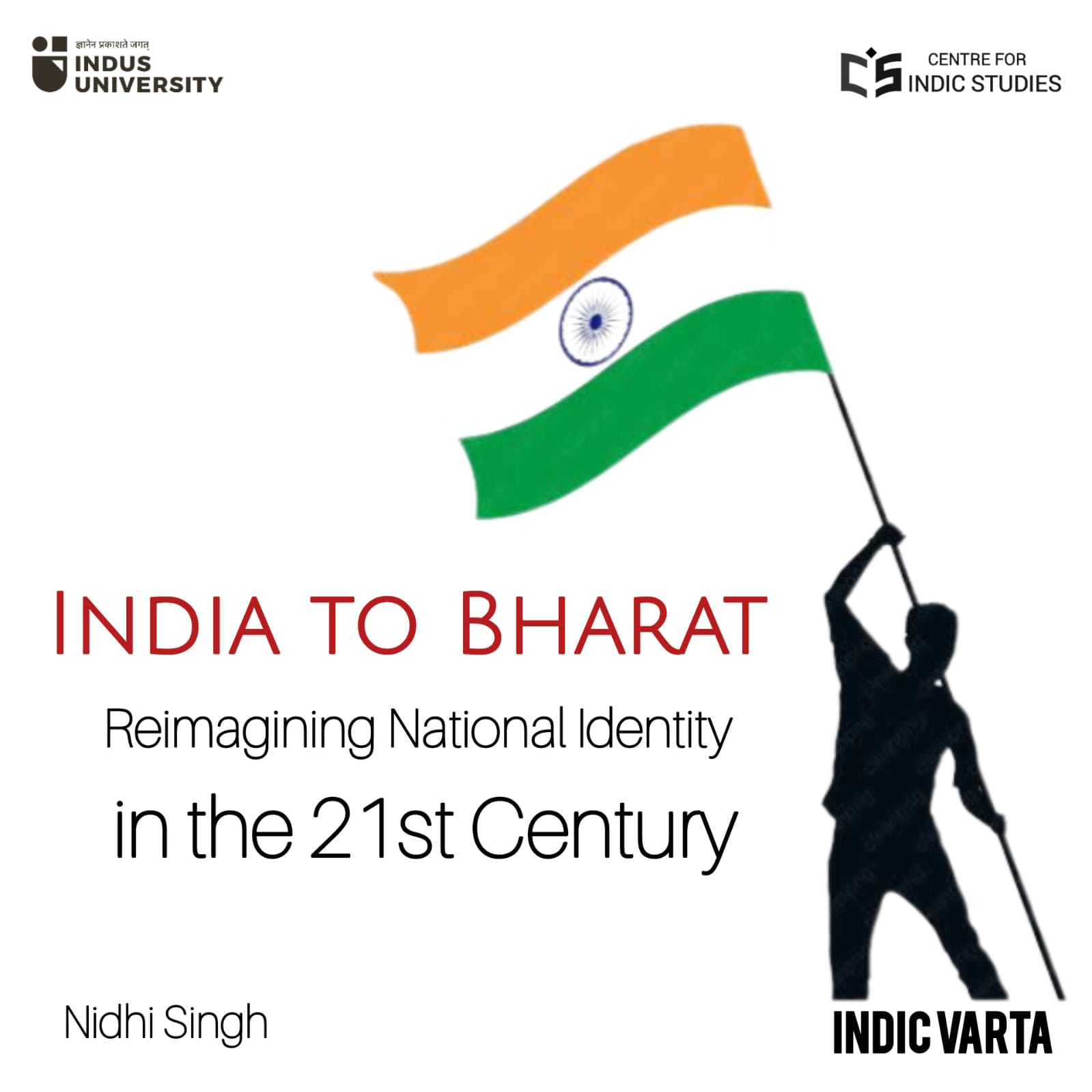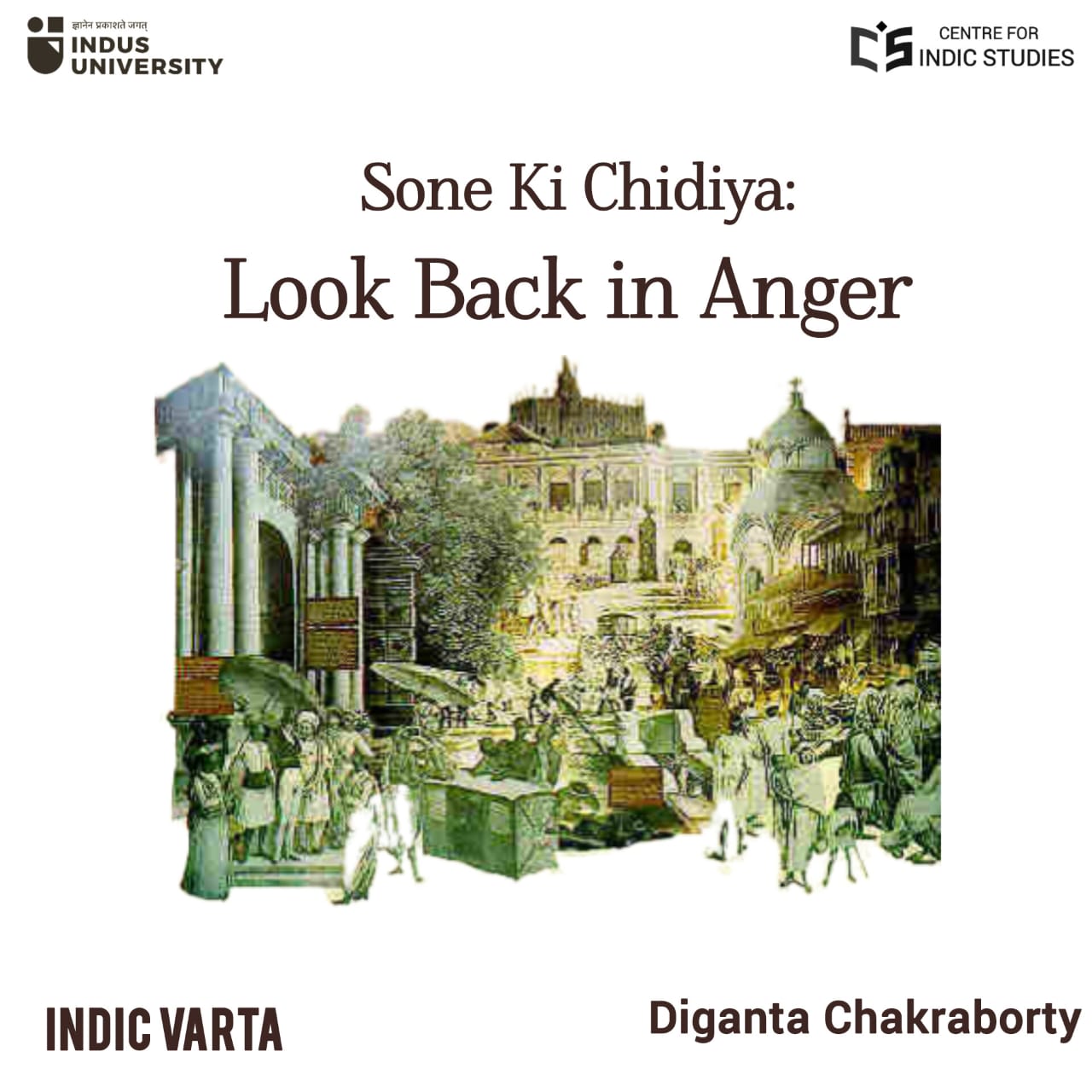- Visitor:80
- Published on: 2024-09-12 04:52 pm
Indian Models of Economy, Business and Management by Dr. P. Kanagasabhapati
(This is a brief summary of the lecture delivered by Dr. P. Kanagasabhapati ji at the Auditorium of Indus University hosted by the Centre for Indic Studies on 14th August, 2024.)
Introduction to Indian Cultural Economic Studies
India, with its rich cultural heritage and diverse history, has indeed grappled with the influence of Western perspectives for centuries. The colonial era left an indelible mark on Indian education, shaping the way students perceive the world. However, amidst this complex interplay of ideas, there have been remarkable efforts to decolonize and reclaim an authentic Indian perspective. Dr. P. Kanagasabhapati ji, a distinguished economist, author, and social worker, has been at the forefront of this endeavour. His works delve into the intricate fabric of Indian economic, social, business, and management systems, emphasizing upon the Indic perspectives. His research challenges the prevailing narrative that the Indian economic models are mere adaptations of Western theories. He asserts that India possesses its own unique economic paradigms, often overlooked by the mainstream academia. These models emerge from the rich tapestry of Indian culture, history, and societal structures.
The book, Indian Models of Economy, Business, and Management, is his seminal work, where Dr. Kanagasabhapati ji meticulously examines these indigenous models. The book provides fresh insights, drawing from authentic sources and updated data. It serves as a beacon for those seeking to understand India beyond conventional textbooks. Dr. Kanagasabhapati’s Tamil books further enrich our understanding. His work பாரதப் பொருளாதாரம் – அன்றும் இன்றும் (meaning, “Bharataporulatharam: Then and Now”) chronicles the history of the Indian economy and business from an indigenous perspective. Additionally, வலுவான குடும்பம் வளமான இந்தியா (meaning, “Valuvana Kudumbam Valamaana India”) explores how families, societies, and culture form the bedrock of India’s economy. His course, titled as “Indian Models of Economy, Business, and Management”, under the aegis of Centre for Indic Studies (Indus University), bridges the gap between the Western theories and the Indian realities. These initiatives empower students to critically engage with their own heritage and contribute to a more holistic understanding of economics. In a world where dominant narratives often overshadow indigenous wisdom, this work stands as a beacon of intellectual independence and cultural resilience. Through his tireless efforts, he invites us to explore the vibrant mosaic of India’s economic thought, unshackled from colonial biases.
Family Structures– A Crucial Nexus
Traditional Indian families– characterized by extended households, intergenerational bonds, and collective decision-making– have long shaped economic choices. However, Western influence disrupts this fabric. The rise of nuclear families and individualism impacts economic resilience, challenging the traditional model. India’s informal sector thrives on trust, kinship, and community networks. In contrast, Western models emphasize formalization, market efficiency, and profit maximization. This clash affects livelihoods, particularly for artisans, small traders, and local entrepreneurs. Dr. Kanagasabhapati explores by blending Western practices with indigenous wisdom, strengthening ‘social capital’ as a bridge. Western-style capitalism exacerbates income disparities, widening the gap between haves and have-nots. Additionally, the industrialization patterns influenced by the West have ecological consequences. India’s ancient wisdom— such as ‘Vasudhaiva Kutumbakam’ (the world is one family)— offers sustainable alternatives. Dr. Kanagasabhapati invokes ancient texts like the Arthashastra and Dharmashastra. These texts emphasize ethical economic conduct, social justice, and holistic well-being. Community-based enterprises, eco-friendly practices, and preserving indigenous knowledge hold promise.
The Story of ‘Poor to Potent’
India’s trajectory has been fascinating. As of the most recent calculations based on Purchasing Power Parity (PPP), India stands as the third-largest economy in the world. For example, we may count the GDP by the PPP ranking. India’s GDP (PPP) places it in the top tier globally. By considering purchasing power parity, which accounts for relative costs of local goods and services, India’s economic strength becomes evident. In 2024, India’s projected GDP (PPP) is approximately $14,594 billion, securing its position as the third-highest in the world. Only the United States and China surpass India in this regard. India’s economy is a dynamic mix of public and private sectors. It ranks fifth by nominal GDP and third by GDP (PPP). However, on a per capita income basis, India’s rankings are 136th (nominal) and 125th (PPP) due to its large population. The concept of PPP allows us to appreciate India’s economic prowess beyond nominal figures. It considers local factors like inflation rates and relative costs, providing a more accurate picture of a nation’s domestic market. India’s journey from ancient civilization to a modern economic powerhouse is a testament to its resilience and potential. As it continues to evolve, India’s impact on the global stage remains significant. This is because of the continuity of the Indic social and economic system. India is a ‘bright-spot’ for every economy in the world and transformed herself from poor to potent. This, once again, is because of the strong fundamentals of the Indian economy.
Do We Need Western Economic Theories?
How is economics taught in India? The syllabus of Indian textbooks includes topics like ‘Modern Economic Theory’ and ‘Indian Economic Problems’. But, why are there only the study of problems in Indian economics, and, that too being the problems that West and colonialism created? India had been the ‘sone ki chidiya’ at the time when the West was not even able to come out of greed and exploitations. The reason for such education is a way of capturing the Indic education system by the West by making Indians feel problematic in their own ‘way of life’, capturing the psyche of the people and further their method to capture the Indian economy.
How to test this? Economics teachers have been teaching economics from Western perspective. Simple way to test is surveying those economic professors, teachers and students. The question regarding ‘the economics’: what are they preaching and are they, at least, investing in what they are preaching? Have they become rich from such investments? Have their economic studies positively and economically impacted the lives of people? It is important to understand the reality: should one not live and believe what one teaches? But the alien feeling of the economics to the reality of Indic economics is directly felt. To understand this, one must know how Western economics, which is taught in academics, actually failed to understand their own models of economics and became the reason for the greatest economic crisis of 2008. This is because of the bad advice of extravagant spending being promoted by well-known economists. The thinking based upon Western perspective made people not to believe in the savings culture. On the other hand, the same global economic crisis could not impact that much to the Indian or Eastern economy. The same reason is also in the income of the remittances. India ranks first in the incoming remittances because of the family structure, method of savings which is part of the civilizational ethos. But, even today, Indian economists and policy makers are advising based upon Western lifestyles! Thus, the cultural change of extravagant weekend spending has impacted the Indian economy. The terms of growth and development have changed, transforming Indic way of life to western lifestyle.
Every society, including the West, needs an Indic way of lifestyle if they want to sustain. But, their preaching is different and it is the cause of the problem. Robert Putnam in his book Bowling Alone explains how society is becoming individualistic. Are we not also turning into the same? It is important to understand that every society functions in a different way and Indic perspective should be built upon the Indic way of life.
Indic Cultural Economy
‘Social Cultural Capital’, where all kinds of relationships impact the economy, has been the basis of Indic economics. To understand this in simple terms, let us take the example of the role of women in India. In India, many rich people attribute their success to women. But now, individualistic society being affected by the West has caused alienation. Based upon Indic studies, one can observe how economics works. For example, the venture capital investments made by grandmothers, mothers and sisters participate in building industries for their sons and brothers. The influence of grandmothers, mothers and sisters have actually kick-started many industries in India, especially in the southern part such as the hotel industries in Western Tamil Nadu. India failed to rise above because, since our independence, our policy makers followed either American style of capitalist ‘Laissez Faire’ economics or Soviet-styled socialist economics. We never gave some air to breathe to the Indic style of economics– the culture-based economics. We followed Marxist thoughts but failed to understand that he stood on his head– making economy as the ‘base’ of the superstructure, but actually, the culture is the base on which society, economy and everything are based. That is the culture-based economy. One such example is also from the capitalist interventions of agricultural failure of Argentina, causing the de-agriculturalization. This same happened in India with forceful introduction of Indigo and tobacco farming over regular crops, causing man-made famines.
Conclusion
It is necessary to understand how to use economic wisdom. There is no uniform model which can be followed but some natural traits are very important to understand. This work of Dr. P. Kanagasabhapati ji is truly important to restructure the economy. To understand in depth, the Centre for Indic Studies (Indus University), offers an ‘Indic Course’ by Dr. P. Kanagasabhapati ji, titled as “Indian Models of Economy, Business and Management”. Enroll to learn more.
- 40 min read
- 4
- 0










